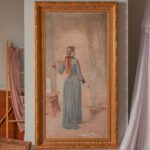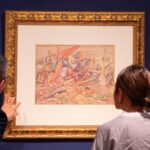BY JUN F. FULGENCIO — The longer furniture stays in the family, the more meaning and value we attach to it. The piece isn’t just carrying our clothes, tableware, or our other belongings anymore — it’s carrying all the stories that happened around it. But have you ever stopped to wonder whether ‘that old thing’ carried stories of its own before it came to be a part of yours? Part of what makes collecting and admiring antique furniture so much fun is the excitement of going deeper — hunting down the clues within the craftsmanship, opening a window into a different time and way of thinking. So keep an eye out because you may recognize these details in pieces from your own home!
The Beginning
In the early 17th century, less than a century after the Spaniards first arrived in the islands, households began having a greater variety of furniture other than the primitive low lying tables called ‘dulang’ (1) and daybed or ‘papag’. The types of furniture produced in the fledgling colony’s various regions and provinces were determined by many factors, creating marked characteristics in style and craftsmanship that could be linked to a particular place.
18th century: Trading in Design
Attributed Regions: Batangas, Manila and Central Luzon provinces
The profitable galleon trade and migration due to the lingering strife in their homeland brought a steady stream of Chinese craftsmen, including furniture makers, to the Philippines. By the 18th century, Chinese influences were evident in the silhouette and design elements of the Batangas Uno and Dos altar tables, and Gargoyle ‘demonyo’ table (2) from Manila and Central Luzon provinces, made in highly prized balayong wood.
Mid-19th century: Go Big or Go Home
Attributed Regions: Central Luzon, Negros, Tarlac, Batangas, Bohol
The golden age in agriculture in the mid-19th century gave rise to the sugar industry in Negros and Tarlac, the coffee industry in Batangas, and the rice industry in Central Luzon, while Manila remained strong as the center of commerce and trading. The ‘buenas familias’ and hacienderos’ wealth and opulence were reflected in the grandiose design, monumental size and expensive choices of wood (such as balayong and kamagong) of their furniture.
Fine examples of these include a primitive-style capiya (3) in balayong that’s over 10 feet long from Batangas, a Tambol aparador (4) in kamagong and narra with ornate inlaid frieze from Bulacan, a Sheraton-style altar table (5) in kamagong and narra from Bulacan, neoclassical ‘Carlos Trece’ chairs (6) from Manila, an elegant poster bed (7) in narra and kamagong also from Manila, and from the Binondo taller of the famous Ah Tay a calabasa bed (8) with a unique mango motif carved on its canopy.
Authentic beds made by Ah Tay remain one of the most sought after pieces of furniture to this day. The island of Bohol developed its unique design elements decorated with abundant use of polychrome that made its furniture – many in molave and balayong – colorfully vibrant and instantly recognizable, like a large comoda (9) in a fiesta of details and colors
20th century: A Flowering of Ornamentation
Attributed Regions: Laguna, Nueva Ecija
At the turn of the 20th century, the Art Nouveau style, inspired by nature, dominated furniture design until the 1920s. This floral design can be found in the pierced carvings of the crest of butaca chairs (10) from Nueva Ecija and Laguna. The Bilibid prison during the early American occupation produced furniture synonymous with fine workmanship, such as an 18-seater dining table (11) made from a combination of narra, molave and kamagong. Its florid carving and monumental size is a lasting testament to Filipino elegance in design and excellent craftsmanship that continues to this day.
The next valuable find could indeed be yours! We are currently accepting notable pieces to be offered at the upcoming ‘Finer Pursuits: Philippine Art & Rare Collectibles’ auction on Saturday, 26 June 2021. Click here to make a confidential obligation-free offer to consign, or send an email to [email protected].
Jun F. Fulgencio is an avid enthusiast, researcher, and writer who has collaborated with Salcedo Auctions’ team of furniture specialists since 2017.



















